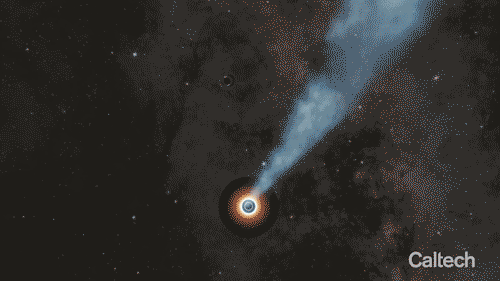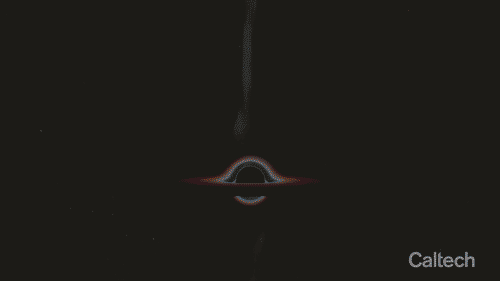Supermassive Black Holes Locked In A Cosmic Dance Are Headed Towards A Titanic Collision

Astronomers have known that quasars could possess two orbiting supermassive black holes, but being able to find direct evidence has been difficult. Quasars are active cores of galaxies in which a supermassive black hole is funneling material from a disk surrounding it. Some quasars have a supermassive black hole that creates a jet that flares out at near the speed of light. This is the case in a new study, PKS 2131-021, reported in the The Astrophysical Journal Letters.

Radio observations that span 45 years delivered the evidence that guided researchers to their discovery. A powerful jet arising from one of the black holes is shifting back and forth due to the pair's orbital motion. The result is a periodic change in the quasar's radio-light brightness. During the four decades of observation, five different observatories registered these oscillations.
Tony Readhead, Robinson Professor of Astronomy, Emeritus, said the discoveries unfolded like a "good detective novel," beginning in 2008 when he and his colleagues began studying how black holes convert material they "feed" on into relativistic jets. Readhead indicated that PKS 2131 was shifting not only periodically, but sinusoidally as well. This provides a pattern that can be traced throughout time, and led to the more looming question of just how long has this sine wave pattern been occurring.
The research team scoured through archival data as far back as 1981. "The story would have stopped there, as we didn't realize there were data on this object before 1980," Readhead said. "But then Sandra picked up this project in June of 2021. If it weren't for her, this beautiful finding would be sitting on a shelf."

"We knew this beautiful sine wave had to be telling us something important about the system," Readhead stated. "Roger's model shows us that it is simply the orbital motion that does this. Before Roger worked it out, nobody had figured out that a binary with a relativistic jet would have a light curve that looked like this."

